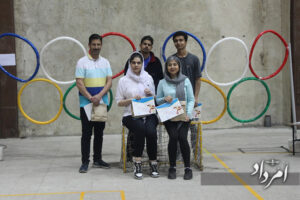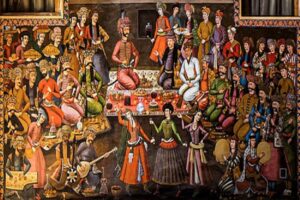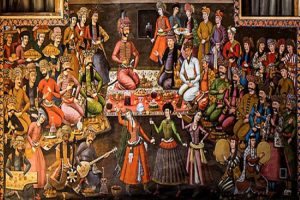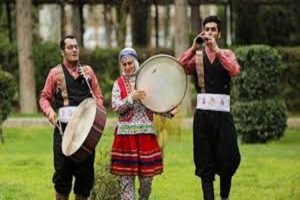Years ago, in the mountains of Russia, archaeologists found the world’s oldest carpet—an Achaemenid carpet woven in Iran between 550 and 350 BC. This carpet is now known as Pazyryk. Next to the Achaemenid carpet, they discovered a piece of cloth with colorful patterns depicting a boar and a bear. This bear species could only be found in the northern part of present-day Iran (in Gilan province). Without a doubt, the beautiful piece of fabric found next to the Achaemenid Pazyryk carpet represents the same art and craft that is now called “Rashti Douzi” in Gilan— an invaluable and aristocratic art with a history of thousands of years.
Rashti Douzi is similar to crochet; it is an art form woven by arranging expensive fabrics with the help of silk threads and those belonging to the ruling system, who adorned their expensive clothes with beautiful embroidery patterns from Rasht.
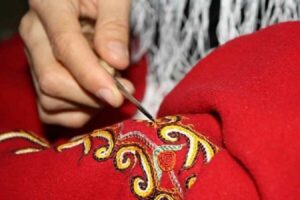
Rashti Douzi was once a luxurious and expensive art, affordable only to the rich, nobles, courtiers, and dependents of the ruling apparatus. They adorned magnificent clothes with beautiful Rashti embroidered patterns. However, despite the long period of forgetfulness, the art of embroidery has now been simplified, allowing everyone to afford it.
To create eye-catching patterns, the artist embroidering the lace, sits at a height, presses their foot on the lace tool using a grooved piece of wood, and engages in artistic work by passing the fabric through the wooden bars with a special hook. The finest and most expensive lace embroidery involves silk threads and colors that harmonize with the unique and beautiful nature of Gilan. The masters of Rashti Douzi skillfully combine warm and cold colors, weaving them together to create handwoven pieces that are not only beautiful to see but also comfortable to wear.
Rashti Douzi artists sometimes use materials like mahout or other fabrics, employing methods that vary depending on the fabric type. The patterns are traditional and carry names such as Toranj, Lachak Toranj, Shamseh, Hashtpar, Bazoband, and Gol-va-Morghi.
The art of Rashti douzi is also used for table spreads and bedspreads. The distinct beauty of this craft was even more prominent in the past. Examples of Rashti Douzi, preserved in the museums of Iran and around the world, serve as evidence of the art’s value and significance for everyone. It stood as one of the most luxurious gifts that Iran shared with the world. Even the sacred cups in Christian churches worldwide were adorned with embroidered covers. To make this art worthy of palaces and holy places, Rashti embroidering artists occasionally used thin golden threads in weaving the patterns of Rashti embroidered fabric.
In Rashti Douzi, artists have the freedom to create designs. They can use their creativity to develop arbitrary pictures or incorporate the same flower embroideries that have adorned Rashti fabrics for centuries, following a fixed pattern.
It’s worth noting that a type of crochet similar to Rashti Douzi in Gilan is also woven in the provinces of Isfahan and Razavi Khorasan.



